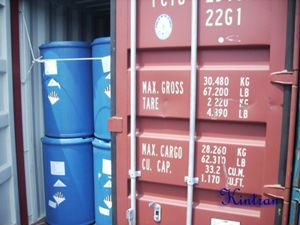Tel: 0086 371 66722268 Email: info@vidarchem.com & vidar@vip.sina.com EnglishEspañol

Tel: 0086 371 66722268 Email: info@vidarchem.com & vidar@vip.sina.com EnglishEspañol

0086 371 66722268
Zhengzhou Vidar Water Industrial Co.Ltd.
Head Office: No.32, Agri-Tech Road, Zhengzhou.
P.R. 45000
LAS-Linear Alkylbenzene Sulfonic is manufactured from linear alkylbenzene (LAB) in self-contained, enclosed systems. LAB is produced by reacting paraffins with benzene and a catalyst and isolating the LAB by distillation. The LAB is then sulfonated, which in turn is then neutralized to sodium salts of LAS.
Linear alkylbenzene sulfonic acid is the largest-volume synthetic surfactant because of its relatively low cost, good performance, the fact that it can be dried to a stable powder and the biodegradable environmental friendliness as it has straight chain. LAS(Linear Alkylbenzene Sulfonic,Linear Alkylbenzene Sulfonic Acid,LABSA 96%) is an anionic surfactants with molecules characterized by a hydrophobic and a hydrophilic group. They are nonvolatile compounds produced by sulfonation. The properties of LAS differ in physical and chemical properties according to the alkyl chain length, resulting in formulations for various applications.

The starting material LAB (linear alkylbenzene) is produced by the alkylation of benzene with n-paraffins in the presence of hydrogen fluoride (HF) or aluminium chloride (AlCl3) as a catalyst. LAS is produced by the sulfonation of LAB with oleum in batch reactors. Other sulfonation alternative reagents are sulfuric acid, diluted sulfur trioxide, chlorosulfonic acid and sulfamic acid on falling film reactors. LAS are then neutralized to the desired salt (sodium, ammonium, calcium, potassium, and triethanolamine salts). Surfactants are widely used in the industry needed to improve contact between polar and non-polar media such as between oil and water or between water and minerals. Linear alkylbenzene sulfonic acid is mainly used to produce household detergents including laundry powders, laundry liquids, dishwashing liquids and other household cleaners as well as in numerous industrial applications like as a coupling agent and as an emulsifier for agricultural herbicides and in emulsion polymerization.